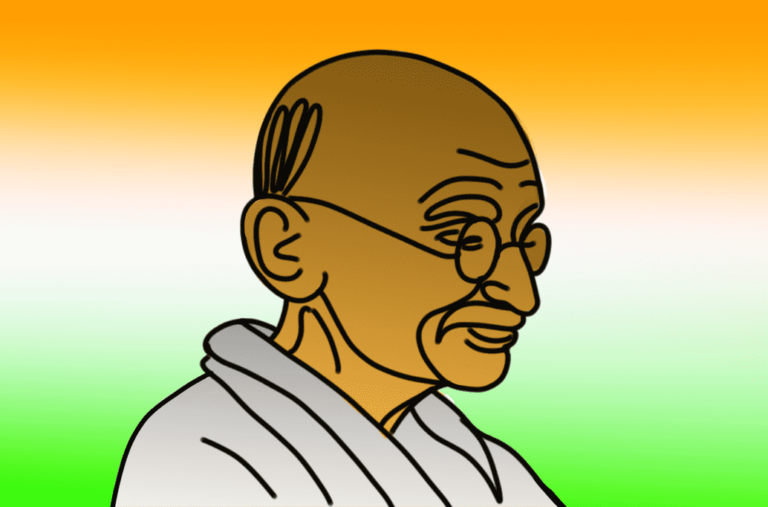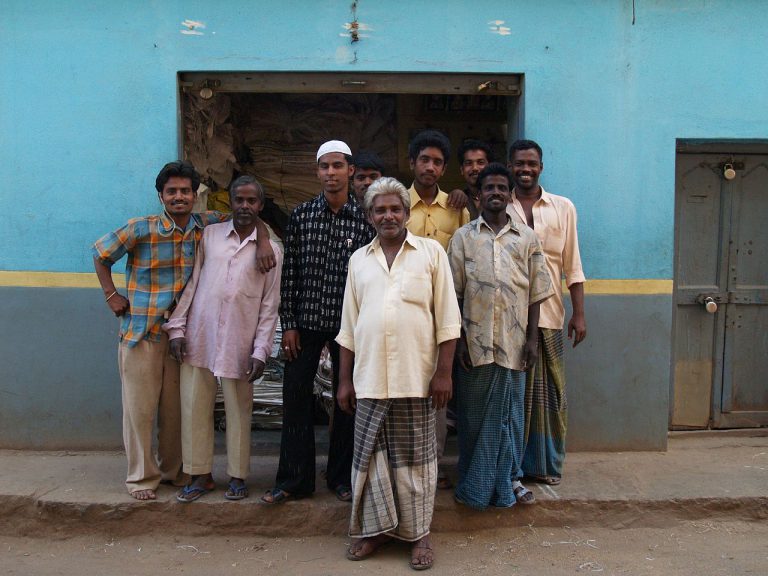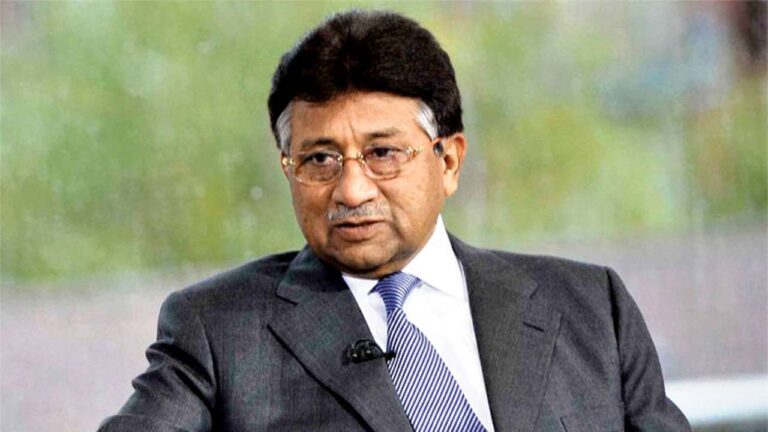Assessing socio-economic and political approach of Indira Gandhi

Farooq Ahmad Bakloo is Research scholar in the Department of Political Science SSJ Campus Almora Kumaun University, Nainital, Uttarakhand. He has also worked in the Parliament of India and has written various research papers in different research journals.
Aasma is a research scholar at Kumaun University, a true motivational speaker and worker. She's passionate about empowering people to attain their goals. She has attended specialized seminars too.
Indira Gandhi was born in 1917 and died in 1984. She served as a Prime minister of independent India from 1966 to 1977 in the first stint and from 1980 to 1984 till her assassination in the second time. During her time she encountered a number of difficulties and hurdles. She was even expelled from the Congress party by then Congress president A.S. Nijalingappa in 1969 due to her differences with the senior leaders of the party.
In 1975, the Allahabad High court found her guilty and declared Indra Gandhi’s election void on the grounds of election malpractice. Despite these challenges, she remains at the helm of Indian politics for a long time serving the country. During the initial period of her prime ministership, she was labelled as ‘Dum -doll’ because of her shyness and lack of oratory skills, but with the passage of time she became a great political orator and because of her increasing grasp over the dynamics of power politics she rejected calls to resign in 1975, despite the adversarial verdict. Due to the insatiability and disorder in the country resulted by the judgement of Allahabad high court Indira Gandhi imposed the state emergency based on the provisions of Article 352 (1) of the Indian constitution and during this period many political leaders who are opposed to Indira Gandhi were arrested. Her way was to crush the opponents very powerfully. She was called the iron lady of India. She also has been compared to other powerful ladies of the world like Margaret Thatcher.
During the emergency, her power and authority were absolute and that is manifested in the slogan coincided by one of her loyalists, ‘India is Indira and Indira is India’. She was an extraordinary personality as her bitter critics were forced to appreciate her courage during the 1971 Bangladesh liberation war against Pakistan. As the leader of the opposition at that time in the parliament, A. B. Vajpayee called her Durga. She was very well-known all over the world. Many notable leaders of different nations had diverse and strong opinions about Indira Gandhi. It is known that Richard Nixon possibly described her as an ‘old witch’, George H.W. Bush recalled her ‘dedicated and inspirational leader’ while Fidel Castro would remember her ‘Sensitive profound women’ and King Juan Carlos of Spain saw her as a ‘contributor to peace Liberty and Progress’. She was called Gamal Nasser’s Niece, King Faisal’s daughter and Yasser Arafat’s sister in the Arab world, and was very popular among the people of Arab who were called Al Sayyida Indira Gandhi.
The political outlook of Indira Gandhi
At international level
At international level Indira Gandhi was an excellent leader; she was called the Machiavelli of India as her policies were practical. She used various international forums like the Non Aligned Movement (NAM), Commonwealth and United Nations to effectively try to enhance the status of India. Her role in the NAM was duly recognised at the seventh conference when she was elected as its chairperson in 1983 at New Delhi. She was against all forms of domination and exploitation based on force. She made excellent relations with the Arab world and was supporting the Palestine cause. It was under her leadership which led to an attempt to bring the states of Himalayas under the Sphere of Indian influence. Indira Gandhi developed significant ties with Russia which resulted in Russia becoming the largest trading partner and biggest arms supplier for much of Indira Gandhi’s premiership.
At domestic level
Under the leadership of Indira Gandhi many political changes, some also controversial occurred at the national level. One of the most notable developments during her tenure was the 42nd amendment of the Indian constitution which was enacted during the emergency. This Amendment, which has raised many questions and debates, is also called the ‘Indira Constitution or mini-constitution’. Under this Amendment, terms like ‘Socialist’ and ‘Secular’ were added in the preamble of the constitution. This amendment also laid down the fundamental duties of the Indian Citizens. The constitutional amendment also gave unrestricted power to parliament to amend any parts of the constitution without judicial review. Later on, however, the Supreme Court of India invalidated this essentiality in Minerva Mills vs Union of India in 1981. Under Indira’s watch, six new states were formed- Haryana 1966, Himachal Pradesh 1971, Meghalaya, Manipur and Tripura in 1972 and Sikkim 1975. Arunachal Pradesh and Mizoram were also created as Union territories.
Social welfare policies
According to the Pankaj Vohara, the maximum number of legislation of social importance was brought under the tenure of Indira Gandhi (the original Aam Aadmi leader, Hindustantimes.com 2009). Under her leadership, many programmes were launched for the development of Indian society. The main slogan of (Garibi Hatao) under this programme, houses were provided to the landless labourers. According to Frankel, three-fourths targeted houses were achieved in 1975 alone (Jaffrelot, Christoph 2003). Another programme for the wellbeing of the society was the abolition of the bonded labour and a moratorium on the debts of the poor. The principle of equal pay for equal work for both men and women was the central principle behind the step to abolish the gender disparity. The privy-purse was eliminated by Indira Gandhi as the privy-purse was the payment made to the royal families of erstwhile princely states as a part of their agreement with the Indian government at the time of independence. So it is clear that Indira Gandhi initiated many welfare programmes for lower sections of the Indian society.
Economic policy
In the realm of economic thinking, there is a debate on whether Indira was a socialist or not as S.K Datta – Ray described her as a master of rhetoric often more posture than policy. While, according to the journalist of The Times Peter Hazlehurst, Gandhi’ Socialism was slightly left of self-interest. Indira Gandhi as a Prime Minister presided over three five year plans among which two relatively succeeded in meeting the targeted growth ( L.N. Dash 2000) There were so many challenges in front of Indira Gandhi due to sharp inflation, unemployment, drought conditions and induced food crises that had pushed India into recession since independence. Under Lal Bahadur Shastri’s leadership, in 1965 the averaged inflation was 7.7% compared to 5.2% at the end of Indira Gandhi’s first term in office 1977. (Basic statistics relating to Indian Economy, Economic intelligence service August 1993). During the 1950s and 1960s, the average inflation in India had remained low below 7%. (Kapila Uma 2009). Due to the international oil crises, the rate of inflation increased sharply in the 1970s from 5.5% to over 20% by 1973-74 (Basic statistics relating to Indian Economy, Economic intelligence service August 1993).
Twenty Point programme
The twenty-point programme was initially launched by the former Prime Minister of India Indira Gandhi in 1975 and was restructured in 1982 and again in 1986 and it was finally restructured in 2006. The chief objective of the twenty point programme is to eradicate poverty and improve the quality of life among Indian citizens. The present twenty point programmes are:-
- (Garibi Hatao) Poverty eradication.
- (Jan Shakti). Power to people.
- (Kissan Mitra) Support to farmers.
- (Shramik kalian) Labour welfare.
- (Khadya Suraksha). Food security.
- (Sabke Liya aawas) Housing for all.
- (Shudh peya jal) clean drinking water.
- (Jan-Jan ka Swasthya) Health for all.
- (Sabke Liye Shiksha ) Education for all.
- (Anusuchati Jaati, Jan jaati Alp- sankhyak evam anya pichhra varg Kalyan) Welfare of Scheduled Castes, Scheduled Tribes, Minorities and OBCs.
- (Mahila Kalyan) Women welfare.
- (Bal- Kalyan) Child Welfare.
- (Yuva Vikas) Youth Development.
- (Basti Sudhar) Improvement slums.
- (Paryavaran Sanrakshan evam van vriddhi) Environment protection and afforest ration
- (Samajik Suraksha). Social security.
- (Grameen Sadak) Rural roads.
- (Grameen Orji) Energization of Rural Areas.
- (Pichhara Kshetra Vikas) Development of Backward Areas.
- (e-Shasan). IT-enabled e-Governance.
The policy of nationalisation
During the time of Indira Gandhi, under her leadership as a Prime Minister, the 14 commercial banks had been nationalised which resulted in the branches of the public sector banks in India rose to approximately 800 per cent in deposits, and advances took a massive jump. The nationalisation policy of commercial banks also resulted in significant growth in the geographical coverage of banks; the number rose from 82,00 to 62,000 (Singh, Kavaljit( 2005). Most of the branches are opened in the rural areas which helped to increase the household savings. On the nationalisation of banks, Jayaprakesh Narayan, a famous opposition leader of Indira Gandhi in 1970s praised the policy.
Indira Gandhi also nationalised the industries of copper, steel, refining cotton textiles, the coal and insurance industries. The main aim behind the nationalisation of industries was to protect employment and interest of the organised labour. The other remaining private sector industries were placed under strict regular control.
During the Indo-Pak war in1971, foreign-owned private oil companies had refused to supply the oil as a fuel to the Indian Navy, and the air force. As a result, Indira Gandhi nationalised the major oil companies like Indian oil corporation, The Hindustan petroleum corporation and Bharat petroleum.
Achievements of Indira Gandhi
The main achievements of Indira Gandhi are as
- Victory over Pakistan (1971) (Creation of Bangladesh).
- Simla agreement (1972) a peace treaty between India and Pakistan.
- Stoppage of privy purses.
- Green revolution in India.
- Incorporating terms “Secular” and “Socialist” in the Preamble of Indian Constitution through 42nd constitutional amendment of the Indian constitution (1976).
- Nuclear State. (Code name was smiling Budha).
- Nationalisation of Banks.
- Suppression of extremism.
Conclusion
Indira Gandhi was the woman with a broad vision and was called Iron lady of India; her policies were pragmatic and emphasised to provide the essential amenities at the grassroots level. She struggled to raise the quality and standard of the life of poor people living in rural India. She was a great international leader, and she tried her best to raise the status of India in every platform of the world. No one can forget the fruitful contribution of Indira Gandhi.
Featured Image: Wikimedia
References
- Vohra, Pankaj, “The original aam aadmi leader”, hindustantimes, 1 November 2009, https://web.archive.org/web/20130513074215/http://www.hindustantimes.com/News-Feed/ColumnsPankajVohra/The-original-aam-aadmi-leader/Article1-471695.aspx Retrieved 22 November 2020.
- Jaffrelot, Christrophe ( 2003) India’s Silent revolution: the rise of the lower caste in northern India, Hurst and co.
- L.N.Dash (2000) World Bank Economic Development of India APH
- Centre for monitoring the Indian economy: Basic statistics relating to Indian economy economic intelligence service August 1993.
- Kaplia, Uma ( 2009) Indian economy since independence, Academic foundation.
- Centre for monitoring the Indian economy: Basic statistics relating to Indian economy economic intelligence service August 1993.
- Singh, Kavaljit (2005) Questioning Globalization, Zed books








